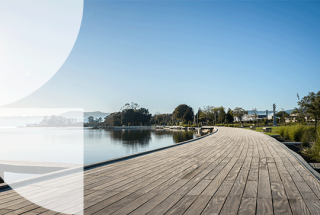Supreme Court upholds councils' power to fluoridate water

Supreme Court upholds councils' power to fluoridate water
Tuesday 24 July, 2018
On 27 June 2018 the Supreme Court issued a judgment which is of significance to councils across the country.
In 2012 South Taranaki District Council decided to fluoridate the drinking water supply for Patea and Waverley. Both towns had high levels of dental decay. Anti-fluoride group New Health New Zealand Inc brought unsuccessful claims in the High Court. It then appealed to the Court of Appeal which issued judgments affirming the legality of fluoridation. New Health subsequently was granted leave to appeal to the Supreme Court.
The Supreme Court’s judgment in New Health New Zealand Incorporated v South Taranaki District Council [2018] NZSC 59 is the most important for councils as it considered:
- Whether local authorities have the power to fluoridate drinking water supply;
- Whether the decision to fluoridate triggers s 11 of the New Zealand Bill of Rights Act 1990 (BORA) which establishes the “right to refuse to undergo any medical treatment”; and
- If the s 11 right is engaged, whether fluoridation is a limitation on that right that is a reasonable limit prescribed by law that can be demonstrably justified in a free and democratic society in terms of s 5 of the BORA.
For local authorities the decision is significant as it establishes that:
- Under the Local Government Act 2002 (LGA 2002) and the Health Act 1956, local authorities have the power to fluoridate drinking water. This power primarily arises from the duties of local authorities in relation to public health under s 23 and s 69A(1) of the Health Act.
- Fluoridation had been lawful in New Zealand for decades and it was against that background that the LGA 2002 was enacted. The Council’s general competence power in s 12(2), when read alongside the express continuation power in s 130 and against the historical background, includes the power to fluoridate.
- The fluoridation of drinking water is medical treatment for the purposes of s 11 of the BORA.
- While the fluoridation of water supply engages s 11, the legislation allowing fluoridation does limit the s 11 right to an extent that is demonstrably justified in a free and democratic society under s 5. The evidence indicates that dental decay is a significant problem in New Zealand, and that Patea and Waverley were worse than other parts of the country.
It is notable that Chief Justice Elias dissented, holding that local authorities do not have the authority to add fluoride to water.
The Supreme Court also issued a separate judgment which addressed other matters associated with the validity of the Medicines Amendment Regulations 2015 and the Medicines Act 1981.
In 2014 James MacGillivray and Megan Crocket of Tompkins Wake successfully represented Hamilton City Council which was sued in judicial review by anti-fluoride group Safe Water Alternative New Zealand (SWANZ).
SWANZ also asked the court to prevent HCC from fluoridating the water supply in the months leading up to the judicial review hearing (called “interim relief”). It argued that such an order was appropriate as it would preserve the status quo. We argued that SWANZ should only get interim relief if it could show that it was necessary to protect its position, which it could not. In other words, SWANZ had to show that, without interim relief, if it succeeded at the hearing then its success would be moot.
Justice Kós accepted our arguments and decided in HCC’s favour. SWANZ withdrew its judicial review claim shortly afterwards.






